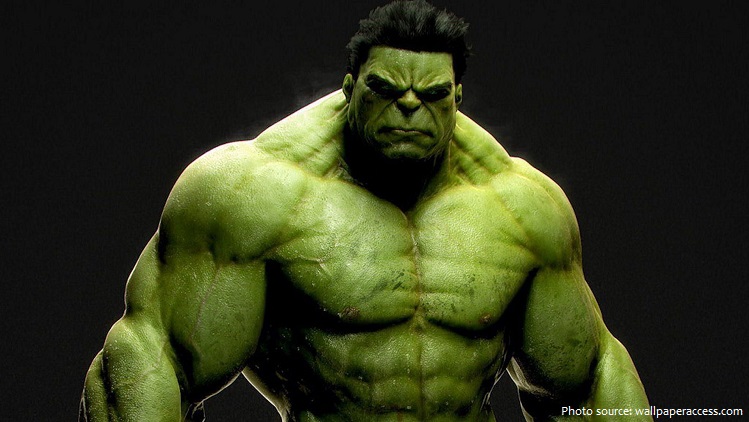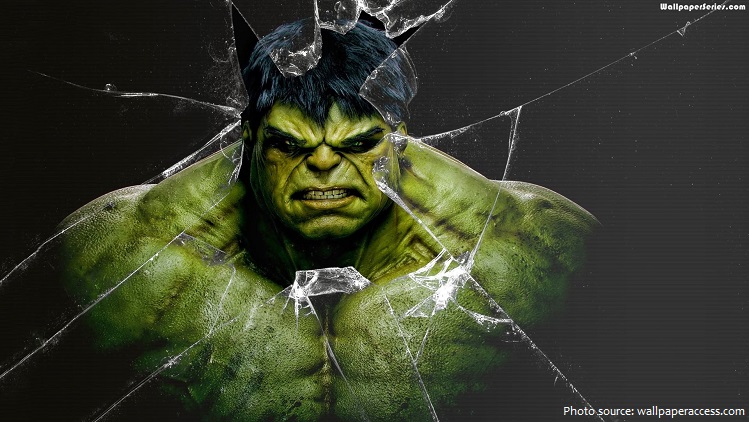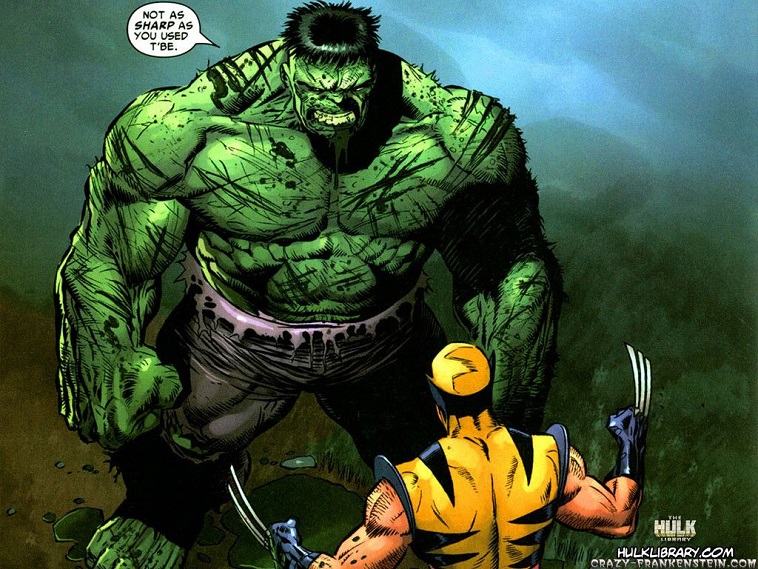
The Hulk is a fictional superhero appearing in publications by the American publisher Marvel Comics.
He first appeared in The Incredible Hulk #1 (cover dated May 1962), written by writer-editor Stan Lee, penciled and co-plotted by Jack Kirby, and inked by Paul Reinman.
In his comic book appearances, the character is both the Hulk, a green-skinned, hulking and muscular humanoid possessing a limitless degree of physical strength, and his alter ego Dr. Robert Bruce Banner, a physically weak, socially withdrawn, and emotionally reserved physicist. The two exist as independent dissociative personalities, and resent each other.

Bruce Banner was a top scientist for the military that was working on a gamma bomb, a weapon of massive destructive power. During a test of the gamma bomb, Bruce noticed a young teenager by the name of Rick Jones had entered the test site. Bruce rushed to aide the young man, and in pushing Rick into a trench, exposed himself to the rays of the gamma bomb. The result of this exposure would be to transform gentle Bruce Banner into the destructive monster known as Hulk.
The characterization and appearance of the Hulk underwent numerous changes after the character’s inception, and these transformations began almost immediately. In his debut appearance the creature had gray skin, but Marvel’s printer was unable produce the hue consistently, and Lee and Kirby made him green in the second issue. The mechanics of Banner’s metamorphosis into the Hulk—during which Banner initially retains his intellect, though his personality becomes warped and evil—also changed fairly early in the character’s history.

As Bruce Banner, the character is about 5 ft 9 in (1.75 m) tall and weighs 128 lbs (58.05 kg), but when transformed into the Hulk, the character stands between 7 and 8 ft (2.13 – 2.43 m) tall and weighs between 1,040 and 1,400 lbs (471.73 – 635.02 kg).
Banner is considered one of the greatest scientific minds on Earth, possessing “a mind so brilliant it cannot be measured on any known intelligence test.” Norman Osborn estimates that he is the fourth most-intelligent person on Earth.

The Hulk’s first comic book series lasted only six issues before being canceled, but audiences were sufficiently intrigued with the title character to justify continued guest appearances elsewhere in the Marvel universe. In addition to brushes with the Fantastic Four and Spider-Man, the Hulk became a charter member of the Avengers, although he left that team after just one issue. The Hulk garnered a regular feature in Tales to Astonish, beginning in issue no. 60 (October 1964). After sharing the title, first with Giant-Man and later with the Sub-Mariner, the Hulk eventually took over the magazine completely, and with issue no. 102 (April 1968) it was renamed The Incredible Hulk.
A year and a half after The Incredible Hulk was canceled, the Hulk became one of two features in Tales to Astonish, beginning in issue #60 (Oct. 1964).

In 1977, two Hulk television films were aired to strong ratings, leading to an Incredible Hulk TV series which aired from 1978 to 1982. A huge ratings success, the series introduced the popular Hulk catchphrase, “Don’t make me angry. You wouldn’t like me when I’m angry”, and broadened the character’s popularity from a niche comic book readership into the mainstream consciousness.
The Hulk was a hybrid of two popular comic book genres—monsters and superheroes. Stan Lee stated that the Hulk’s creation was inspired by a combination of Frankenstein and Dr. Jekyll and Mr. Hyde. Lee also compared Hulk to the Golem of Jewish mythology.

In The Science of Superheroes, Gresh and Weinberg see the Hulk as a reaction to the Cold War and the threat of nuclear attack, an interpretation shared by Weinstein in Up, Up and Oy Vey. This interpretation corresponds with other popularized fictional media created during this time period, which took advantage of the prevailing sense among Americans that nuclear power could produce monsters and mutants.
The Hulk was ranked #1 on a listing of Marvel Comics’ monster characters in 2015.
One of the most iconic characters in popular culture, the character has appeared on a variety of merchandise, such as clothing and collectable items, inspired real-world structures (such as theme park attractions), and been referenced in a number of media.